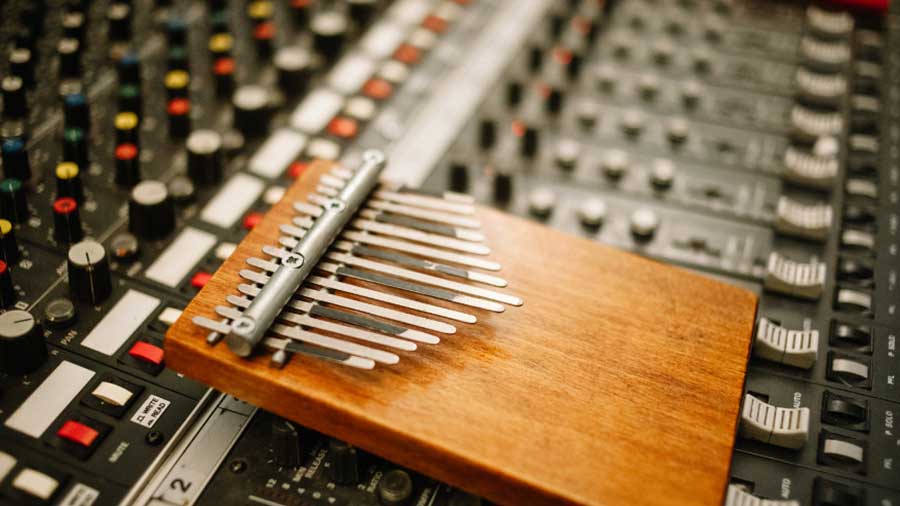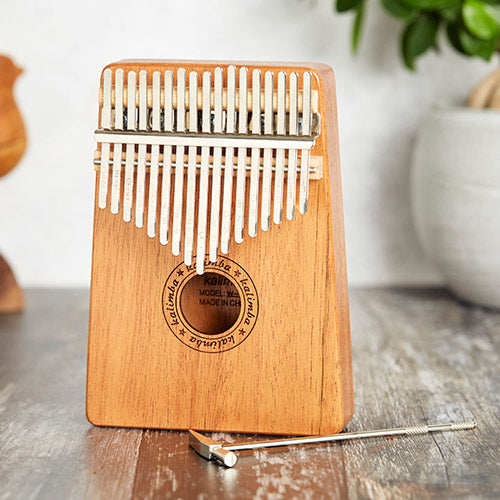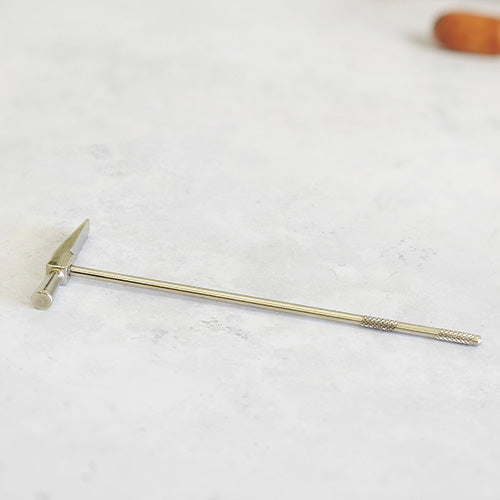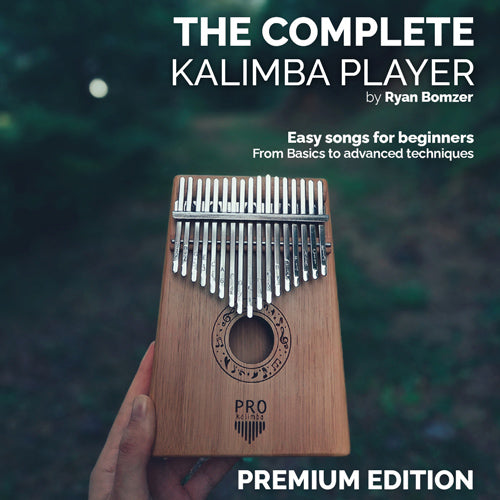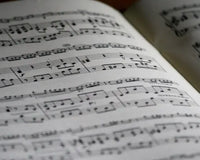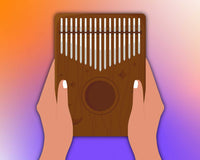The kalimba is a musical instrument that is made up of metal keys that are attached to a wooden board. It is a traditional instrument used in African cultures for centuries and has recently become popular in the western world. The sound it produces is unique and its accessibility makes it perfect for anyone to learn. In order to get the most out of your kalimba, there are a number of accessories that you can purchase. Here are the top 15 kalimba accessories that are essential for maximizing your playing experience.
1. Kalimba stickers
Kalimba stickers are a great way to learn how to play the kalimba and decorate it. They are a type of adhesive note sticker that can be placed on the kalimba keys to indicate which notes should be played. This can be helpful for beginners who are unfamiliar with the notes of the instrument, as the stickers provide a visual guide of where to play the notes. By using kalimba stickers, players can learn the correct finger placement for each note without having to memorise each note’s location.
This makes learning new songs much easier and can be a great way to quickly learn a piece of music. Kalimba stickers can also be a great way to experiment with new sounds or scales. By playing around with the placement of the stickers, one can explore new scales and sounds. For those who are looking for a fun and creative way to learn the kalimba, kalimba stickers are a great option.
2. Tuning Hammer

A tuning hammer is the most important accessory for a kalimba. It is used to tune the keys of the kalimba so they produce the correct notes. The tuning hammer is also used to adjust the tension of the keys and to keep them in tune. With a tuning hammer, you’ll be able to ensure that all of your notes are in perfect harmony. To use it to adjust the tines on the kalimba to achieve the desired pitch you will need to gently tap the tines until the desired note is reached. This tool is essential for tuning the kalimba and will help you get the most out of your instrument without hurting your thumbs on the metal tines.
3. Kalimba Stand
A kalimba stand is useful for keeping the instrument in an upright position when not playing. It also provides a safe place to store the kalimba when it is not in use. A stand is a great way to keep your kalimba easily accessible and these look amazing in the studio and will further protect your instrument.
4. Tuning Fork

A tuning fork is used to create a reference sound for the kalimba so that players can tune the instrument correctly but using a tuning fork is for professional use.
5. Pickup
A pickup is an external device that is attached to the kalimba and amplifies the sound of the instrument. This is useful for playing with other musicians and for recording. An electric Kalimba would have pickups inside it so that it can be attached to an amplifier but if your kalimba is not electric, you can use this external pickup to produce an electronic signal.
6. Amplifier
An amplifier is used to increase the volume of the kalimba and can be useful for playing in large venues. There is currently no dedicated kalimba amplifiers but as long as you have an electric kalimba with built in pickups, you should be able to connect it to a guitar amp to edit the sound input.
7. Kalimba case

A kalimba case is essential for protecting your instrument from damage and dust. Choose a case that is specifically designed for kalimbas to ensure the best fit and protection. They come in a variety of designs and materials, for the best protection you should opt for a hard rugged case but for ease you could buy a soft sleeve. This is a great way to store and protect your kalimba. An accessories case will help to keep your kalimba safe and secure and make it easier to transport.
8. Kalimba bag
As well as a case, a kalimba bag is useful for transporting your musical instrument along with the song book and accessories that you have. With the help of a strap, you’ll be able to easily carry your kalimba around with you, whether you’re travelling or just going out to play.
9. Book
A kalimba song book can be a great way to learn how to play the instrument, as well as find new songs and techniques to try out. We have not made a song book yet but have release hundreds of free kalimba tabs on our website if you want to learn.
10. Metronome

A metronome is a great tool for any musician, and kalimba players are no exception. With a metronome, you’ll be able to keep time and make sure your songs are in perfect tempo. Just play to the beat.
11. Tuning tool

A tuning tool is similar to the tuning hammer although these typically cost more and are more accurate when tuning. This is an essential tool for any kalimba player that has an expensive instrument and wishes to tune it whilst reducing the risk of damaging it from the hammer.
12. Thumb pick finger protectors
A thumb pick is a great tool for playing intricate melodies without hurting your thumbs. The tines can be harsh on the thumbs which is why these protectors are great for sensitive skin. Choose one with a kalimba design for a unique look.
13. Microfibre cleaning cloth
Th microfibre cleaning cloth is perfect for keeping your kalimba clean and free of dirt and dust. A cleaning cloth will help to keep your kalimba looking and sounding great, it can be used to clean and polish your musical instrument.
14. Brass buzzers

Kalimba buzzers are more commonly known as 4mm brass pipe fittings but in the kalimba world these buzzers add a unique African sound to your kalimba music, offering distortion that is essential to traditional kalimba music. Easy to install, they slip onto the tines between the bridge and the "Z bracket". Typically, they are placed on the nine lower row tines, the amount you will need depends on how many tines your kalimba has. Elevate your kalimba music with the authentic African sound of the kalimba buzzers.
15. Korg chromatic tuner

The KORG CA-2 chromatic electronic tuner is the perfect tool for any musician. This tuner accurately detects the note being played, indicating if it's sharp, flat, or in tune. Its digital display simulates an electrical meter, with lights indicating the note's tuning status. A unique feature of this tuner is the ability to "retune" it using the "CALIB" buttons, allowing you to adjust the reference pitch to anything between 410 Hz and 470 Hz. This feature is useful for tuning to non-standard frequencies, like A=432 Hz, preferred by some healing musicians. Tune your instruments to perfection with the KORG CA-2 Chromatic Electronic Tuner.
16. The Complete Kalimba Player eBook
The Complete Kalimba Player eBook is a 62-page resource packed with tuning guides, diagrams, exclusive tips, and 37 easy songs for all skill levels. Save time with this all-in-one guide—the only resource you’ll ever need! Get instant access to a quality-checked, printable PDF full of variety. Was £10, now £5—offer ends soon, get yours now and start your kalimba journey today!

